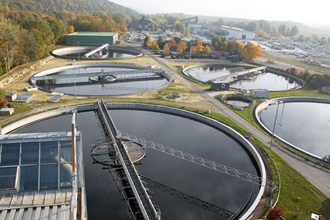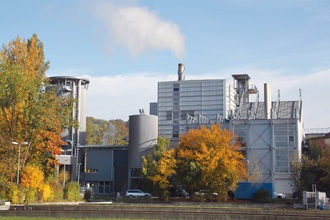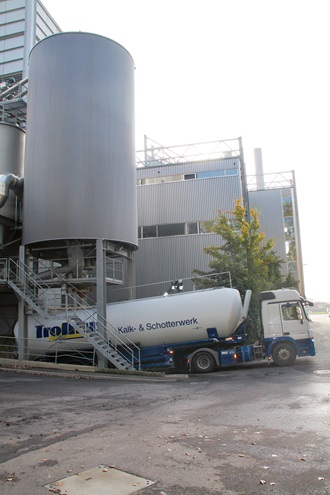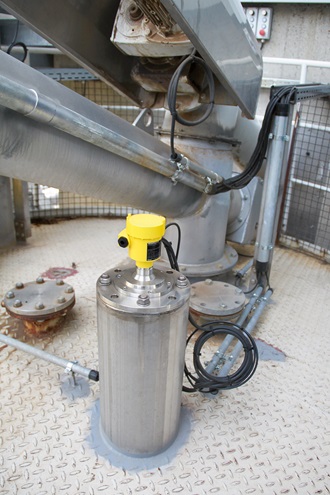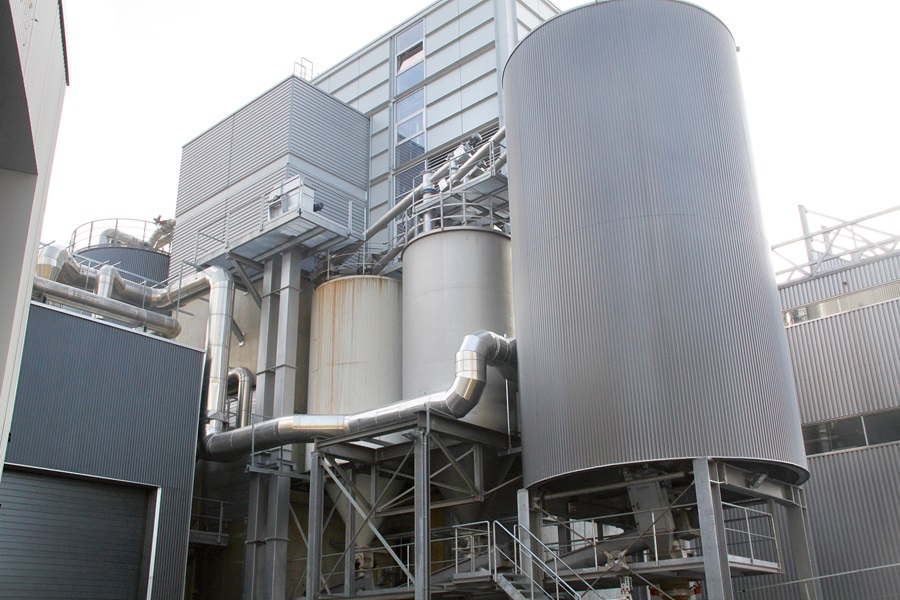A test instrument proves its worth: 80 GHz solids level radar solves a difficult ash silo level measurement. |
There are some measuring points so challenging that even experienced service technicians can reach their limits with them. This was the case in one of the most modern sewage treatment plants in Baden-Württemberg, where content measurement in an ash silo was required. VEGAPULS 69 came at just the right time. Originally installed only for a trial, the new level sensor has now become a permanent piece of equipment at the plant.
Ash for recycling
20 to 40 tonnes of dried sludge are thermally utilized each day in the sewage treatment plant Steinhäule.
Convincing improvements
This image shows the four silos (three round ones plus one in the angular building at the left). The two VEGAPULS 69 level sensors are installed on the two silos on the left.
The conversion in the sewage treatment plant was quickly completed, the old measuring instrument was simply replaced by the new one. If more level sensors are replaced in the future, the operator is certain that VEGA will be the first choice: "If we are convinced by the products of a particular manufacturer, we stick with them."
Export this article
Download as PDFShare this article
Comments ({{comments.length}})
{{getCommentAuthor(comment, "Anonymous")}} {{comment.timestamp | date : "dd.MM.yyyy HH:mm" }}
{{comment.comment}}

